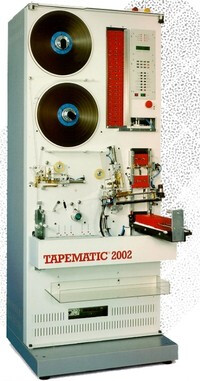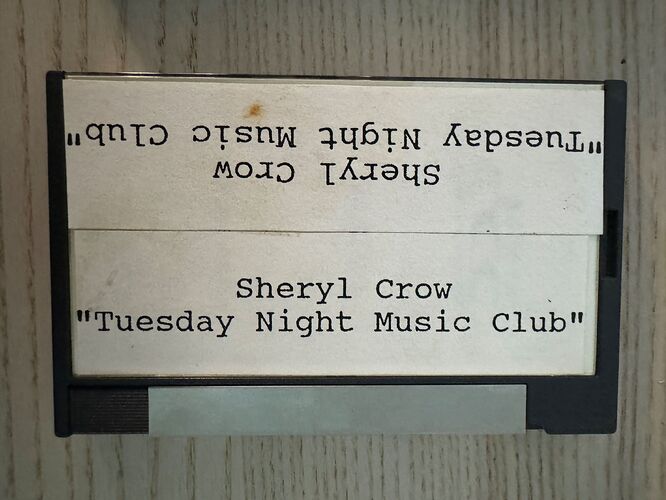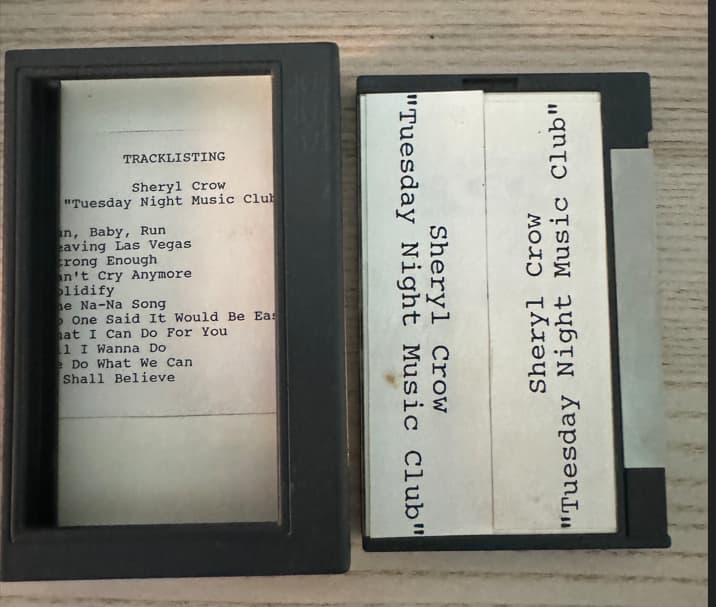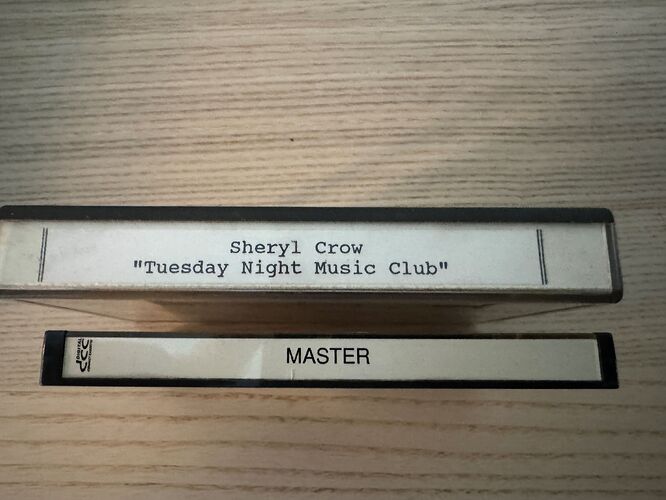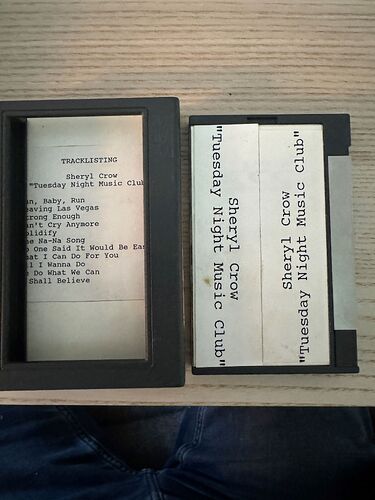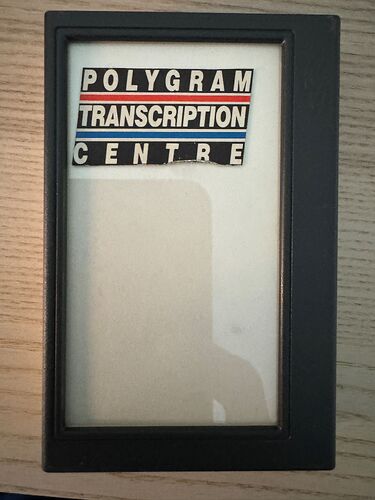I would like to follow up on the answer and share some more details with you all, if anyone needs it 
I was indirectly involved with the DCC project, or better said PASC, as I indicated earlier I worked at Polygram, I started in 1984 in the MC department, I actually did all the usual work there for the first 2 to 3 years, from the flushing of the MC’s (called C0) on the C0 loaders (in short we said CoLA, where the 0 was replaced by an o), packing the MC’s, later in the copy department and later again as a music controller.
If there is interest in how the total process works from Master to MC end product then I would be happy to explain that, but in itself that has nothing to do with DCC.
In my former function as Music Controller I was asked if I wanted to participate in listening sessions for a new product (which later became known as DCC) interesting is especially when this was:
I am certain that it was early 1990, but I think it was late 1989, I am not completely sure about 1989, people tend to mix things up after so long, but I am 100% certain about 1990, this because Polygram moved from Baarn to Amersfoort in January 1991 and immediately started with test productions of the DCC tapes.
The listening tests were in Baarn and at that point in time that I was involved, it was not even about the medium DCC but about PASC, as you all know PASC is the compression system that was needed to make the source as small as possible while retaining as much quality as possible, Sony had its own system (I have forgotten the name) and Philips had put its money on PASC.
Well, my input was simply blind listening sessions, there were 4 sources:
-
“Old-fashioned Analogue”
-
CD
-
CD played by PASC
-
Sony MiniDisc
All 4 sources are started at the same time (usually with a delay of 1 second, so that when switching between sources you hear the same piece of music) but as a listener you do not know which source you are listening to, that is determined by the person behind “the buttons” and that is why it is called blind listening.
At that point in time, PASC was still a prototype 19 inch cabinet in which all the hardware and software was located, which was constantly being adjusted using large plug-in cards.
The Sony system was much further along at that time because we had a prototype MD player there (when I asked where it came from, they literally said: don’t ask any questions about its origin  )
)
The assignment was simple, could I blindly indicate which source I was listening to?
Now, in retrospect, that was a fairly simple assignment, I could get a high percentage out of it when I listened to source 1 and source 4, I had more difficulty with source 2 and 3, in other words source 2 (CD) and source 3 (PASC) were so close together that it was actually a guessing game, source 1 (analog) and source 4 (MD) were easy to separate from each other and completely from source 2 and 3.
Not because I worked at Philips at the time and was therefore biased, at that point in time, Philips was sound-technically further along than Sony with their compression system. The Sony compression system was clearly inferior and I would also put it in 4th place in terms of quality.
Dead listening room
The equipment used was:
Studer A86 Power Amp
Studer A80 1/2 inch recorder
JBL 4315 loudspeakers
Quad ESL63 Loudspeakers
Philips CD Player (I think the CD 304)
Unknown Sony MiniDisc
PASC
Philips home-made mixing console
The much-used slogan at the time was: CRUSH SONY, it was clear that PASC had to be better from Philips Eindhoven and that may also be partly responsible for the end result of DCC, a failure, it HAD to be better than Sony and Philips (of course) continued to develop PASC, and that in itself is normal, what was not normal in my eyes is that hundreds of DCCs were destroyed every day because Philips Eindhoven had a new soft/hardware update and that it was EVEN better now than yesterday or last week.
I thought this was strange, because production that we had approved yesterday and sent to the customer was now destroyed (often even recalled from the distributor) and then destroyed in Amersfoort, a separate department had even been set up to destroy the DCCs, 4 or 5 people work there 8 hours a day for this task.
To me it feels the same as a car manufacturer, so to speak, recalling and destroying their production because there is now a new steering wheel.
In 1989/1990 when it was not yet fully known within Polygram Baarn that the end product would be DCC (after all, at that time it was PASC), PASC was miles ahead of SONY, Sony’s advantage was that they already had a medium with the optical MD, but in terms of sound technology they were a considerable backlog.
I maintain my position that in retrospect choosing a tape medium was not the wisest decision, but at the time it was a logical one, I remember very well that when we had just moved with Polygram to Amersfoort there was a separate listening room for the DCC project, and demonstrations were also given there, somewhere in February 1990 we were allowed/had to come in groups to attend the official introduction of DCC, and there it was explained what DCC was, we could listen to DCC and it was also explained why the tape medium had been chosen. The main reason was that Philips strategy was based on the USA, if you conquer the USA you conquer the world was the idea, and why TAPE and not an optical medium? And then came what seemed to us a perfect strategy:
The USA was a tape country, estimates were that there were 500 million MCs in circulation in the USA, because the DCC player could also play the old MCs, Philips thought they could conquer the USA market with this strategy, 1 player that could play both the old and the new sound carrier, it seemed like a brilliant idea, in retrospect it was not the right decision.
I think that in retrospect there are several reasons for the failure of DCC:
-
tape medium
-
backwards compatibility (which was well thought out but caused the heads to become dirty and worn)
-
much too expensive
-
too few titles
-
too much product thrown away, Polygram never really had the chance to flood the market with the entire catalogue of pre-recorded product, the capacity was there, but simply finished product was dumped en masse
-
too much fighting with Sony, which meant that their artists were not released on either DDC or MD, this of course because both Philips and Sony had their own labels and therefore artists
7 both DCC and MD failed
I am sometimes going a bit off topic, but that is caused by a brain disease (CBD) that is playing tricks on me and I have also been busy writing this for a long time, because I am trying to avoid there being untruths in it. That is why I say the year 1989 with reservation, because I am not 100% sure anymore, the year 1990 I am sure about because of the move of Polygram from Baarn to Amersfoort.
Questions and or comments? I would like to hear them and I am also curious about reactions.
Kind regards,
Henk Tittel
11-08-2024
Baarn, Netherlands
![]()
